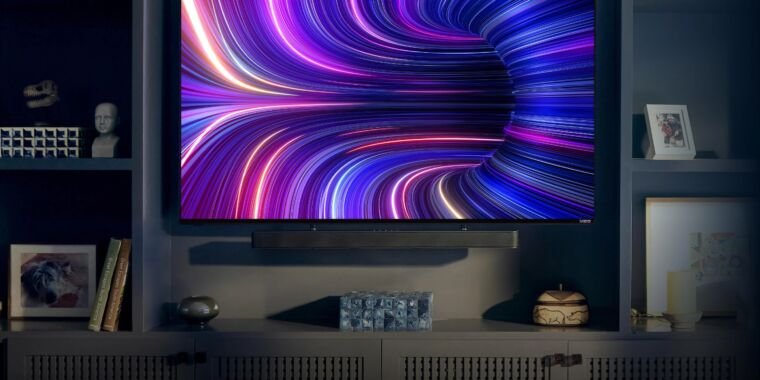
Vizio has agreed to pay $3 million to settle a class-action lawsuit that alleged the corporate misled clients concerning the refresh charges of its TVs.
In 2018, a lawsuit [PDF], which was later licensed as a category motion, was filed in opposition to Vizio for promoting its 60 Hz and 120 Hz LCD TVs as having an “efficient” refresh charge of 120 Hz and 240 Hz, respectively. Vizio was referring to the backlight scanning (or black body insertion) skill, which it claimed made the TVs appear to be they have been working at a refresh charge that was twice as quick as they’re able to. Vizio’s claims failed to deal with the drawbacks that may come from backlight scanning, which embody much less brightness and the potential for noticeable flickering. The lawsuit complained about Vizio’s language in advertising supplies and consumer manuals.
The lawsuit learn:
Vizio is aware of, or on the very least ought to know, that its tv with 60Hz show panels have a refresh charge of 60 photographs per second and that backlight manipulation strategies can’t and don’t enhance the efficient Hz (refresh charge) of a tv.
The lawsuit, filed within the Superior Court docket of California, County of Los Angeles, accused Vizio of utilizing deceptive techniques to steer retailers to promote and suggest Vizio TVs. It accused Vizio of making an attempt “to promote its lesser-quality product at a better worth and allowed Vizio to comprehend gross sales it might not have in any other case made if it have been truthful concerning the efficiency capabilities of its televisions.”
Beneath the settlement phrases [PDF] noticed by The Verge, individuals who purchased a Vizio TV in California after April 30, 2014, can file a declare. They will obtain $17 or as much as $50 if the fund permits it. The person payout may additionally be beneath $17 if the claims exceed the $3 million fund. Vizio can even pay lawyer charges. Folks have till March 30 to submit their claims. The ultimate approval listening to is scheduled for June 20.
Vizio additionally agreed to cease promoting their TVs with 120 and 240 Hz “efficient” refresh charges however “won’t be obligated to recall or modify labeling for any Vizio-branded tv mannequin that has already been bought or distributed to a 3rd celebration,” in response to the settlement. Additional, the California-headquartered firm can even provide affected clients a “service and restricted guarantee package deal conservatively valued at $25” per particular person.
Vizio, per the settlement, denies any wrongdoing. The corporate declined to touch upon the settlement to Ars.
The settlement comes as techniques for preventing movement blur, like backlight scanning and body interpolation (recognized for inflicting the “cleaning soap opera impact”), have been maligned for sometimes making the viewing expertise worse. LG and TCL have additionally confronted class-action lawsuits for enhancing refresh charge claims by saying that their movement blur-fighting strategies make it look like their TVs are working at a better refresh charge than potential. Whereas the case in opposition to LG was dismissed, TCL settled for $2,900,000 [PDF].
Regardless of the criticisms, backlight scanning and movement smoothing stay on default throughout numerous TVs belonging to unsuspecting house owners. Class-action circumstances like Vizio’s that find yourself having a damaging value for OEMs present additional incentive for them to at the least cease utilizing the power as a technique to superficially increase spec sheets.
